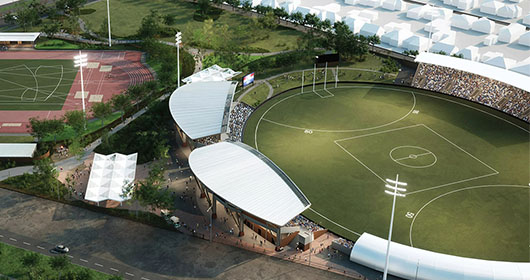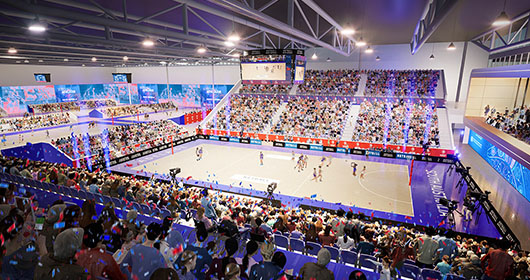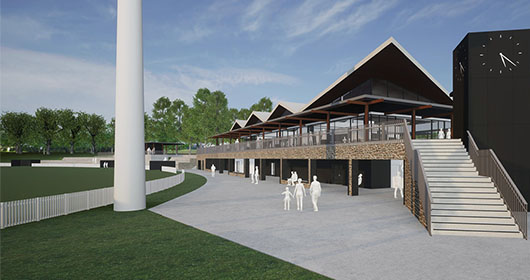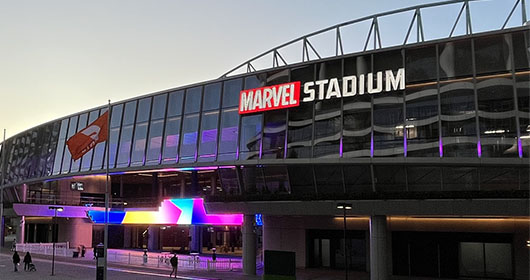It's all about turf
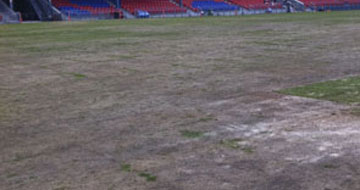
In the international sporting world, turf is important. Very important. Venues around Australia are increasingly under the pump for delivering poor grass surfaces, whether it be the Sydney Football Stadium after a major concert, the ever maligned Etihad Stadium surface, or as has been in the media this week - the surface at EnergyAustralia Stadium following a motorcross event that forced the postponement of two A-League matches. Austadiums.com interviewed Bernie Proctor, a Turf Research Scientist, to find out the latest in turf technology.
In 2013, there will be a conference for the International Turf Association in China; Bernie Proctor will be presenting his findings on 'how different playing surfaces are constructed depending on what code is played'. While he was a little hesitant to tell us more about the German funded study, he outlines his research guidelines exclusively to Austadiums.
"I'm looking at the actual grass profile itself. It's looking at putting in a different medium, within that medium a reinforcement that allows for a tabled surface. For football it also has the ability to bump in and bump out on a specific route without impacting the surface itself. It is looking at the establishment rate of the actual surface, if it inhibits the actual surface."
"Something is put over to not impact the turf. What this research is entailing, with this subsurface product on the surface, is if this hindered it in any way. Does it impact on grass germination?"
Proctor knows about grass, he was curator at Lindfield Oval in Sydney's north and has a Masters in Agriculture from the University of Sydney and a Certificate 3 in Turf Management.
In an endorsement for Wellington's Westpac Stadium, Proctor believes the six week break from all sporting events is absolutely necessary.
"This is paramount. There are two periods, spring and autumn renovation. Dust surface needs to be rehabilitated, a layman thinks just grass cut, at the end of the day. Forty players running around the pitch, a fair bit of consolidation and compaction is done. You need to aerate, so the irrigation penetrates through the profile...six weeks is a good amount of time to let the surface rest"
Artificial surface has been all the rage for many years, but Proctor believes it is not the solution for Etihad Stadium's surface problems.
"When looking at Etihad Stadium, which is an enclosed stadium, where there is a limited turf profile, there are a lot of contributing factors. Really look at air movement, light, drainage over surface profile. Water should be able to get away, so there is no boggy or damp surface. Biggest problem is natural light. I don't know if the lighting would suffice - air movement of the surface."
"The biggest problem you need is airflow over the surface. Passage control is extremely difficult to manage and then rectify when they have an outbreak. Do you just keep the roof open?, That goes along way, but there is just not enough air flow over the surface, there is just too much surface area of wall that is stopping the airflow."
"Also you have to look at temperature; cooch grass has an optimum temperature range...that can't be achieved at the best of times in Melbourne, let alone within a stadium. Low temperatures and raised humidity at grass roots level. Higher amounts of shade... redesigning the roof or taking the roof off would be the best option without outlaying significant capital."
In the last ten to fifteen years Proctor has seen a surge in turf research, driven by TV networks.
"They want to see a nice lush green playing surface. They demand a certain standard. A fair amount of resource and technological change has occurred."
However with the stadium model in Australia requiring venues to bid for concerts and other entertainment events, Proctor believes turf is the victim.
"A lot of these major stadiums, they are determined by making alternative arrangements to get funding. It is good to get concerts in open air rather than in the confined space of a stadium."
"There is certainly an over-use of facilities. Recently, ANZ Stadium played host to Ben Hur, one has to ask if it's an appropriate venue."
Proctor believes turf management into the future needs to become more sustainable "I am also doing a Masters in Sustainability; turf management is actually a pretty heavy polluter in terms of the amount of chemicals it uses and the amount of water needed."
As grass becomes more important into the future, Bernie Proctor's research into turf technology will have lasting benefits to the millions of sports followers who appreciate their code of choice being played on the best surface possible.

